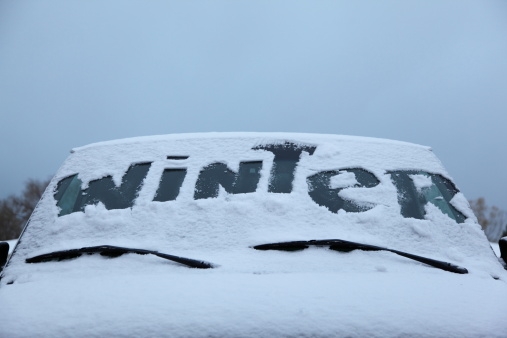Let’s start with the outside of your home. You may have heard the term “black ice” to describe that near-invisible sheen covering your front step and walkway. “Black ice” is a poor term to describe something you can’t see until you slide and break a leg on it or even hit your head on a hard surface after taking a fall. Even worse, those spots place seniors at risk for very serious injury, including a broken hip.
Never assume that those spots aren’t icy, even if you didn’t have an ice storm overnight. Many apartment complexes, for example, fail to turn off the timers on their automatic sprinkler systems. So they’re activated as usual, and when the temperature dips below 32 degrees, the water freezes on sidewalks, in parking garages and on steps. The same thing applies within residential neighborhoods. Your neighbors may be out of town, for example, or perhaps they’ve forgotten to turn off their sprinkler system. The patch of sidewalk outside your home is clean, but stray too far, and you could take a nasty fall. If you’re unsure about whether or not the sidewalk is slippery, walk slowly and cautiously with your feet pointing outward. This position actually helps you brace yourself better, and it helps protect you to some degree in the event that you slip and fall.
The National Safety Council recommends taking the following precautions on potentially slippery surfaces:
■ Avoid wearing high-heeled shoes or boots outside. Instead, wear flat shoes with slip resistant soles or rain/snow boots; both of these provide you with some degree of traction.
■ As stated above, take short, flat steps. The heels and soles of your shoes keep contact with the ground as long as possible, providing you with maximum surface contact.
■ Before heading indoors, shake your umbrella outdoors; and once inside, remove your shoes. Snow and ice often stick to the soles of shoes and will melt almost immediately as your shoes begin to warm up. The result is a slippery surface and the risk of a fall.
Proceed with caution when walking across your front yard. If you can avoid it altogether, steer clear of your grass. For starters, it may be frozen, which will cause you to slip and fall faster than you can say “ouch.” Second, you could damage plants when your feet land on them and you “break” the leaves.
For those of us living in the Midwest, North Central or Northeast states, shoveling snow is an annual (and dreaded) event. Scooping up heavy piles of that snow is hard work for your back muscles. Impatience or over-enthusiasm can cause you to pull a muscle or suffer from nagging backaches. Shoveling “pros” recommend that homeowners use curved shovels versus flat ones; they retain snow more effectively. And select a shovel that is of reasonable weight. If it’s slightly smaller than the other ones in the hardware store, sure, it might take you longer to do the job. But if you’re continually lifting a heavy shovel, you could hurt yourself. Make sure that as you’re lifting your snow-filled shovel, you’re bending your knees. Don’t twist your back and toss the snow over your shoulder. That movement, when repeated continuously, will promote backaches.
If you haven’t had your chimney inspected and thoroughly cleaned yet, it’s time. Call a professional before that first fire. A professional chimney-cleaning service will perform a intensive inspection of your chimney and reduce the risk of gas leaks, system failures, even small explosions. And while he or she is on the job, make sure you have a chimney cap installed to keep out critters seeking refuge from the cold. The bigger issue with chimneys, of course, is the risk of carbon monoxide accumulation. Install a carbon monoxide detector, as well as a good smoke detector, and keep plenty of spare batteries on hand for both. Be sure to keep a metal screen in front of your fireplace while it’s in use, and always make sure the fire has been thoroughly extinguished before you go to bed. Also, if your home has a furnace, make sure that you replace the furnace filter monthly.
Before you head indoors, take a walk around the outside of your home. Are icicles hanging from the edge of your roof in droves? While that’s a common sight in the wintertime, it could also mean that your roof is poorly insulated. While this isn’t a risk to the welfare of you and your family, it is a risk to your financial welfare. Icicles form when heat rises and causes the snow on your roof to melt and then freeze. While it’s possible for a homeowner to tackle the job alone, if you have any doubts about how to go properly insulate your roof, call a professional. As with any home improvement, it’s an up-front investment that will more than pay itself off later in terms of lower energy bills.
The winter months are the precisely the time when you look forward to relaxing and spending a little time in front of the fireplace, in the safety of your own homes. Staying alert will help you and your family stay safe and enjoy this season.
■ Office: (815) 874-8733
■ Address: 4472 S. Mulford Road
■ City/State: Rockford, Illinois 61109

